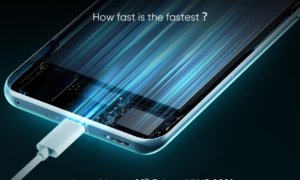5G here, 5G there, 5G everywhere. Ever since Mobile World Congress 2017, we’ve been hearing of OEM’s and telcom’s desire to usher in a new era of speed, 5G. One year later, we’re still hearing about it, but not using it. 5G is almost an urban myth by now… or is it? We sat down with Matthew Byrne, SVP, Global Sales Leader of Mobile at Xperi, to get his expert perspective on the subject. Not only did he answer our burning questions, but he also painted a pretty picture of the future of tech.
Although Xperi is embracing 5G and what it represents for users completely, Byrne is aware of the fact that right now, 5G is “a bit more sizzle than steak.” We’ll definitely have to wait a couple more years to see all of our favorite devices support the technology and make it to the market, he believes.
Once that happens though, what will the world be like? In the same honest, down-to-earth manner, Byrne talked about tech companies’ thought processes, specifically how most of them tackle consumer needs. He revealed that it all starts from a need, a problem, which eventually ends with the question: “What is the incentive for you [the user] to upgrade?”
Right now, consumers want smaller devices, more powerful than the previous models, that sound and look better but also cost less. Obviously, OEMs translated this in handsets with bigger screen-to-body ratio, ditching the bezels.
Couple this new form factor with users’ need for escape and you get – surprise! – gaming phones.
“We’re seeing a paradigm shift from console to handheld device. We’ve [Xperi] come out with novel technologies that blend well for an immersive gaming experience”
Asus, Xiaomi, ZTE were the first phone makers to realize that gaming handsets are the next big thing in tech, but they certainly aren’t the last ones. Interestingly enough, they’re competing with companies like Razer. This year, the global leader in gaming hardware has released their first mobile phone. Coincidence? We think not.
Meanwhile, software companies, like Xperi, are starting to channel their efforts into providing OEMs with the audio and imaging solutions to come on top in this race. Byrne told us that users should expect their audio innovations to cross over from headphones into handsets. Also, you’ll see the company’s next-gen imaging solutions shift towards xR applications.
But how can startups gain attention in this post-5G world? “Think about your basics and once you have that, you can build yourself in a category killer. If you try to go too far, too fast, the story ends up not being as positive as possible.”, Byrne advises.
In other words, startups should perfect the basics before promising a second act they might not have resources for.
Follow TechTheLead on Google News to get the news first.






















